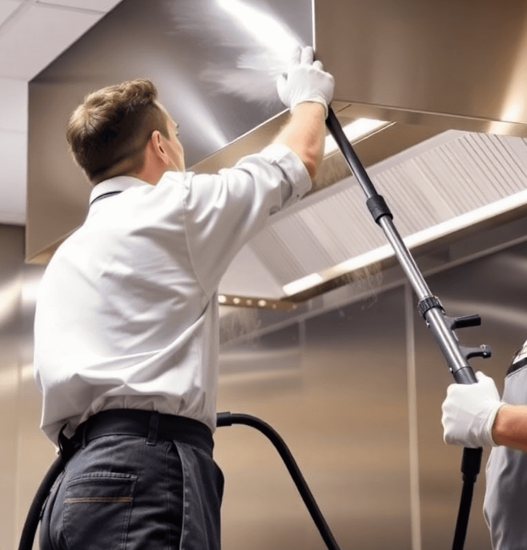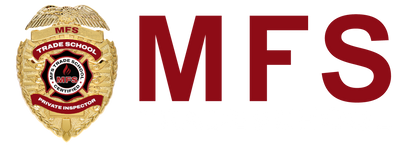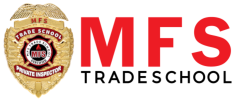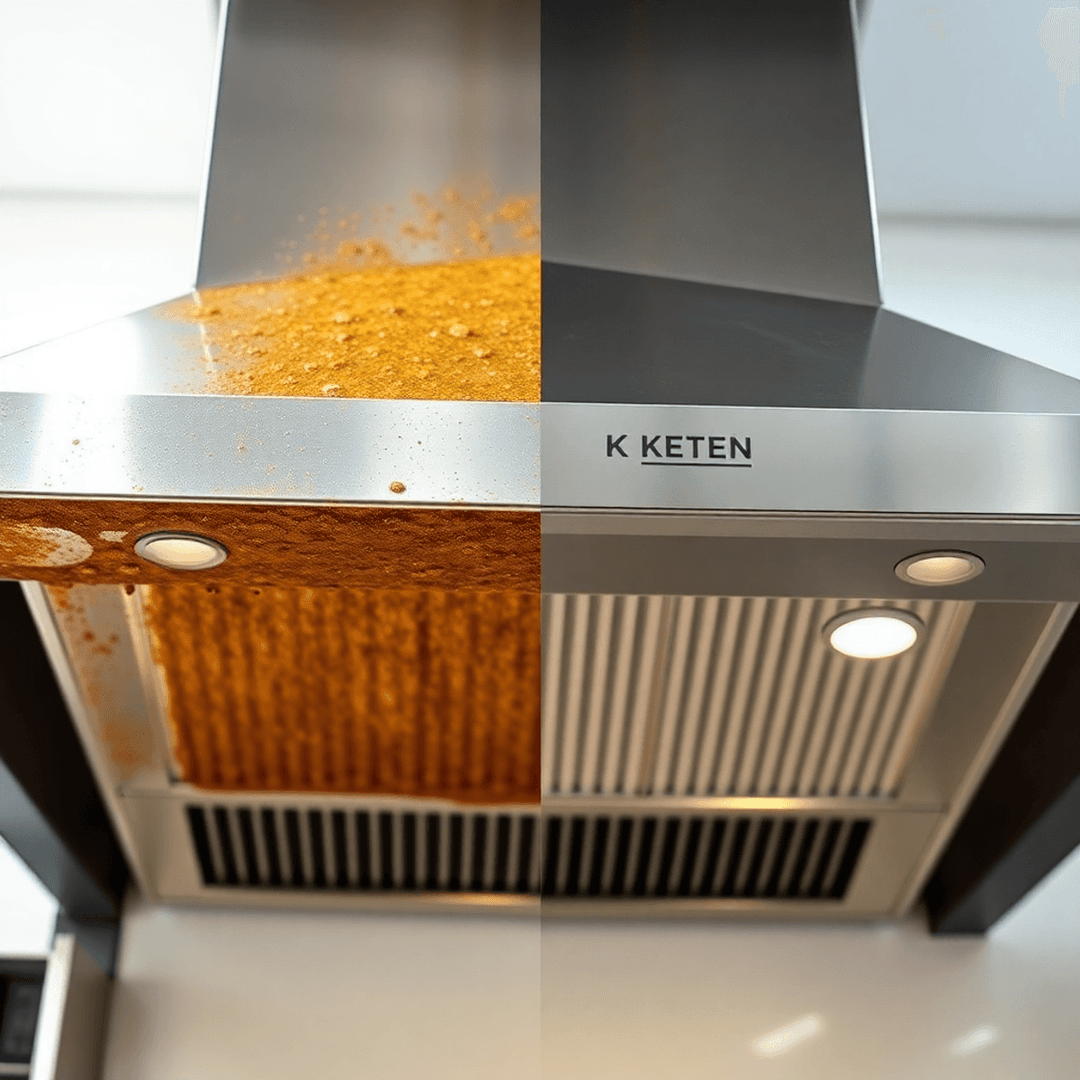How to Turn Kitchen Exhaust Cleaning into a Six-Figure Business

Kitchen exhaust cleaning represents a lucrative business opportunity in the commercial cleaning sector. This specialized service addresses critical safety requirements for restaurants, hotels, and food service establishments, making it an essential component of facility maintenance.
The demand for professional kitchen exhaust cleaning services continues to grow, driven by:
-
Strict fire code regulations
-
Health department requirements
-
Insurance compliance standards
-
Rising awareness of fire safety
Income Potential Breakdown:
-
Single deep clean service: $300-$800
-
Monthly maintenance contracts: $200-$400
-
Average weekly revenue: $2,000-$4,000
-
Potential annual revenue: $100,000-$200,000
Building a six-figure kitchen exhaust cleaning business requires strategic planning and execution. Success in this industry stems from combining technical expertise with business acumen. Key elements include professional equipment investment (like the Gold Equipment Package Kitchen Exhaust Hood Cleaning), proper certifications (which can be obtained through comprehensive training programs such as those offered by MFS Trade School), efficient operations management, and strong client relationships.
The market opportunity extends beyond restaurants to include:
-
Healthcare facilities
-
Educational institutions
-
Shopping centers
-
Industrial kitchens
-
Corporate cafeterias
This comprehensive guide will walk you through the essential steps to establish, grow, and scale a profitable kitchen exhaust cleaning enterprise. From initial setup to expansion strategies, you'll learn proven methods to build a sustainable six-figure business in this specialized field.
To ensure the success of your venture, investing in quality equipment is crucial. For instance, using an MFS Electrostatic Misting Fogger can significantly improve your cleaning efficiency. Additionally, acquiring the necessary skills and knowledge through MFS Trade School's Kitchen Exhaust Hood Cleaning program will provide you with a competitive edge in this growing market.
Remember that building strong relationships with clients is just as important as having the right equipment and skills. Engaging with clients through personalized experiences such as custom video reviews can enhance customer satisfaction and loyalty.
1. Starting Your Kitchen Exhaust Cleaning Venture
Launching a successful kitchen exhaust cleaning business requires strategic planning and careful consideration of startup costs, equipment selection, and operational setup.
Professional Equipment Requirements
Core Cleaning Equipment:
-
High-pressure washing system: $3,000-$5,000
-
Industrial vacuum system: $2,000-$3,500
-
Scrapers and hand tools: $500-$800
-
Chemical supplies: $1,000-$1,500
-
Safety equipment: $800-$1,200
Professional-Grade Tools Investment
Quality equipment directly impacts service efficiency and client satisfaction. Professional-grade tools offer:
-
Enhanced cleaning performance
-
Reduced service time
-
Extended equipment lifespan
-
Improved safety features
-
Better results documentation capabilities
Setting Up Operations
Business Infrastructure:
-
Secure storage facility for equipment
-
Vehicle customization for equipment transport
-
Chemical storage systems
-
Documentation and reporting tools
-
Scheduling and management software
Team Building Considerations
Initial Staffing Requirements:
-
Lead technician (owner-operator)
-
Assistant technician
-
Administrative support
-
Sales representative
Financial Planning
Working Capital Requirements:
-
3-6 months of operating expenses
-
Emergency equipment repair fund
-
Marketing budget
-
Employee training resources
-
Insurance deductibles
The startup phase demands careful attention to equipment selection and quality. Professional-grade tools like high-pressure washing systems provide superior cleaning results and operational efficiency. This investment directly impacts service quality, client satisfaction, and business reputation.
Regular maintenance of such equipment is crucial for cleaning businesses, as it boosts efficiency, reduces downtime, and saves on costly repairs. Implementing proper equipment maintenance protocols and regular calibration schedules protects your investment and ensures consistent service delivery. A well-planned equipment replacement schedule helps maintain operational efficiency and prevents service interruptions.
Moreover, understanding the importance of kitchen exhaust cleaning can significantly improve health ratings and keep your kitchen compliant with health department standards. Additionally, adopting effective hood cleaning strategies for fire prevention is essential to promote a safe kitchen environment.
In the current climate, where foodborne illnesses are prevalent
2. Getting Certified and Trained for Success
Professional certification is crucial for success in the kitchen exhaust cleaning industry.
-
CECS (Certified Exhaust Cleaning Specialist)
-
CESI (Certified Exhaust System Inspector)
-
CEMA (Certified Exhaust Maintenance Assessor)
These certifications demonstrate expertise in:
-
Fire safety regulations
-
NFPA 96 standards compliance
-
Advanced cleaning techniques
-
System inspection protocols
-
Risk assessment procedures
Training Options for Aspiring Hood Cleaners
-
Hands-On Training Programs
-
On-site apprenticeships
-
Practical equipment handling
-
Real-world cleaning scenarios
-
Safety protocol implementation
-
Online Certification Courses
-
Self-paced learning modules
-
Video demonstrations
-
Technical documentation review
-
Virtual assessments
-
Manufacturer Training
-
Equipment-specific instruction
-
Chemical handling certification
-
Maintenance procedures
-
Troubleshooting techniques
For those exploring MFS trade schools, these institutions are offering comprehensive training programs that effectively bridge America's skills gap.
Industry-Specific Knowledge Requirements
Professional kitchen exhaust cleaners must master:
-
Local health codes
-
Fire safety regulations
-
Insurance requirements
-
Environmental compliance
-
Documentation procedures
Certification programs typically require:
-
40-60 hours of classroom instruction
-
Practical field training
-
Written examinations
-
Performance evaluations
-
Annual recertification
Investment in proper training yields significant returns through:
-
Higher service rates
-
Increased client trust
-
Insurance premium reductions
-
Legal compliance assurance
-
Enhanced business credibility
3. Crafting a Solid Business Plan
A strategic business plan serves as your kitchen exhaust cleaning venture's roadmap to success. This critical document outlines your path to building a six-figure enterprise while addressing key operational and financial aspects.
Essential Components of Your Business Plan:
-
Executive Summary
-
Company mission statement
-
Target revenue goals
-
Unique value proposition
-
Service area coverage
-
Market Analysis
-
Local restaurant density
-
Competitor assessment
-
Market size calculation
-
Growth opportunities
-
Service Offerings
-
Basic hood cleaning packages
-
Premium deep cleaning services
-
Maintenance contracts
-
Emergency response services
-
Financial Projections
-
Startup costs breakdown
-
Monthly operating expenses
-
Revenue forecasts
-
Break-even analysis
-
Cash flow management
-
Marketing Strategy
-
Digital presence development
-
Consider utilizing a custom photo gallery for impactful business imagery. This can elevate your marketing efforts with industry-tailored images.
-
Direct outreach methods
-
Partnership opportunities with local restaurants, which may include offering services such as cooking oil filtration, are crucial for maintaining food quality and profitability.
-
Referral program structure
-
Operational Framework
-
Service delivery protocols
-
Quality control measures
-
Equipment maintenance schedules
-
Staff training requirements
-
Risk Management
-
Insurance coverage details
-
Safety protocols
-
Compliance requirements
-
Emergency procedures
Your business plan should include specific pricing structures. Consider implementing tiered service packages:
|
Service Level Price Range Included Services Basic |
$300-$500 |
Standard hood cleaning |
|
Premium |
$500-$800 |
Deep cleaning + inspection report |
|
Enterprise |
Custom pricing |
Multi-location contract services |
The plan must address scalability options through:
-
Additional service vehicles
-
Team expansion strategies
-
Territory growth plans
-
Service diversification opportunities
Include specific metrics for tracking success:
-
Customer retention rates
-
Revenue per client
-
Job completion times
-
Customer satisfaction scores
4. Marketing Your Services Effectively
Effective marketing strategies drive sustainable growth in the kitchen exhaust cleaning industry. Strategic positioning and consistent client acquisition methods create a steady flow of business opportunities.
Digital Marketing Essentials
Professional Website Development
-
Showcase before/after cleaning photos
-
Display certification badges
-
Feature client testimonials
-
Include online booking capabilities
Search Engine Optimization (SEO)
-
Target local keywords
-
Create content about hood cleaning regulations
-
Optimize for "near me" searches
-
List the business on Google My Business
Social Media Presence
-
Share educational content about fire safety
-
Post real-time cleaning process videos
-
Engage with local restaurant communities
-
Run targeted ads to reach decision-makers
Direct Marketing Approaches
-
Partner with restaurant equipment suppliers
-
Join local restaurant associations
-
Attend food service industry events
-
Build relationships with health inspectors
Cold Outreach Strategies
-
Identify restaurants without service contracts
-
Create personalized pitch presentations
-
Develop multi-tier service packages
-
Implement follow-up systems
Building Client Relationships
-
Implement automated scheduling systems
-
Send maintenance reminders
-
Offer loyalty discounts
-
Create referral incentives
Professional Brand Development
-
Design recognizable uniforms
-
Maintain branded service vehicles
-
Create professional documentation
-
Develop standardized service protocols
Value-Added Marketing
Educational Content Creation
-
Produce fire safety guides
-
Share maintenance tips
-
Create regulatory compliance checklists
-
Develop kitchen safety resources
Strategic Partnerships
-
Collaborate with restaurant consultants
-
Partner with equipment manufacturers
-
Connect with facility management companies
-
Network with food safety trainers
Incorporating additional services, such as virus disinfecting, can also enhance your value proposition. These services ensure safety by protecting spaces from pathogens through thorough and efficient solutions.
Tracking marketing metrics helps optimize campaign performance. Monitor key performance indicators:
-
Client acquisition costs
-
Conversion rates
-
Customer lifetime value
-
Return on marketing investment
5. Managing Operations and Scaling Up Your Business
Efficient operations management is crucial for running a successful kitchen exhaust cleaning business. It involves effectively scheduling services and planning for growth in order to achieve six-figure revenue goals.
Optimizing Service Scheduling
Time Management Strategies:
-
Schedule cleanings during off-peak hours (11 PM - 5 AM)
-
Group clients by geographic location to minimize travel time
-
Maintain a digital calendar system for tracking appointments
-
Build in buffer time for unexpected complications
-
Create standardized cleaning protocols for consistent service delivery
Client Communication Protocol:
-
Send automated appointment reminders 48 hours in advance
-
Provide real-time updates during service execution
-
Document before/after photos for quality assurance
-
Generate immediate digital service reports
Scaling Your Operations
Team Expansion:
-
Hire and train additional technicians in phases
-
Create detailed training manuals and SOPs
-
Implement quality control measures
-
Establish clear roles and responsibilities
-
Develop leadership positions for experienced staff
Equipment and Resource Management:
-
Purchase additional cleaning units based on demand
-
Maintain inventory tracking systems
-
Schedule regular equipment maintenance
-
Stock supplies in bulk to reduce costs
-
Establish relationships with reliable suppliers
Business Automation Tools:
-
Implement customer relationship management (CRM) software
-
Use digital invoicing and payment systems
-
Deploy route optimization software
-
Adopt cloud-based scheduling platforms
-
Install GPS tracking for service vehicles
Growth Strategies:
-
Target multiple commercial kitchen segments
-
Expand service territory systematically
-
Form strategic partnerships with restaurant suppliers
-
Create recurring maintenance contracts
-
Develop additional service offerings
Quality Control Measures:
-
Regular performance audits
-
Client satisfaction surveys
-
Equipment inspection protocols
-
Safety compliance checks
-
Service consistency monitoring
Operational Metrics Tracking
Key Performance Indicators:
-
Average service time per client
-
Customer satisfaction rates
-
Revenue per service call
-
Employee productivity rates
-
Equipment utilization rates
-
Client retention percentages
Systematic tracking of these metrics enables data-driven decisions for continuous operational improvement and sustainable business growth.
6. Maximizing Profits and Ensuring Long-Term Success
Creating sustainable profitability in kitchen exhaust cleaning requires strategic pricing and service structuring. A well-designed revenue model incorporates tiered service packages that cater to diverse client needs while maximizing income potential.
Tiered Service Package Structure
Basic Service Package ($300-$500)
-
Monthly hood and filter cleaning
-
Basic duct inspection
-
Compliance documentation
-
Standard cleaning report
Premium Service Package ($500-$800)
-
Bi-weekly hood and filter cleaning
-
Complete duct system cleaning
-
Detailed inspection reports
-
Priority scheduling
-
Emergency service availability
Enterprise Package ($800+)
-
Weekly maintenance
-
24/7 emergency support
-
Multiple location management
-
Custom cleaning schedules
-
Comprehensive documentation
-
Dedicated account manager
Revenue Optimization Strategies
Contract-Based Services
-
Annual service agreements
-
Quarterly payment options
-
Volume discounts for multiple locations
-
Early renewal incentives
Value-Added Services
-
Kitchen equipment maintenance
-
Fire safety consultations
-
Compliance training
-
System upgrade recommendations
Client Acquisition and Retention
Target Market Segmentation
-
Independent restaurants
-
Restaurant chains
-
Hotels and resorts
-
Healthcare facilities
-
Educational institutions
Quality Service Delivery
To ensure restaurant cleanliness, which plays a vital role in maintaining public health, it's essential to implement standardized cleaning protocols, conduct regular staff training, perform quality assurance checks, integrate client feedback, and track performance metrics.
Profit Maximization Techniques
Cost Management
-
Bulk supply purchasing
-
Route optimization
-
Equipment maintenance schedules
-
Staff productivity tracking
Revenue Enhancement
-
Seasonal promotions
-
Referral programs
-
Cross-selling opportunities
-
Strategic partnerships with equipment suppliers
The implementation of these structured approaches creates a foundation for consistent revenue growth. Regular analysis of service performance metrics enables continuous refinement of offerings and pricing strategies, driving both client satisfaction and business profitability.
-
Overcoming Challenges and Mitigating Risks in the Industry
Running a kitchen exhaust cleaning business presents unique challenges that require strategic solutions and risk management approaches. Here are critical challenges and effective mitigation strategies:
-
High turnover rates in cleaning staff
-
Training costs for new employees
-
Worker safety concerns during night shifts
Solution: Implement comprehensive training programs, offer competitive benefits, and create clear career advancement paths
Equipment and Maintenance Issues
-
Costly repairs of specialized cleaning equipment
-
Unexpected breakdowns during service calls
-
Storage and transportation of cleaning supplies
Solution: Establish preventive maintenance schedules, maintain backup equipment, and partner with reliable suppliers
-
Changing fire safety codes
-
Environmental regulations for waste disposal
-
Insurance requirements
Solution: Join industry associations, subscribe to regulatory updates, and maintain documentation systems
Market Competition
-
Price undercutting by competitors
-
New entrants with minimal experience
-
Unauthorized service providers
Solution: Build authority through certifications, showcase quality differences, and develop unique service packages
Operational Challenges
-
Scheduling conflicts with restaurants
-
Access issues to cleaning areas
-
Time management during peak seasons
Solution: Use scheduling software, maintain clear communication channels, and create flexible service windows
Financial Risks
-
Late payments from clients
-
Seasonal revenue fluctuations
-
Rising operational costs
Solution: Implement deposits for services, diversify client base, and establish clear payment terms
Client Relationship Management
-
Managing expectations
-
Handling complaints
-
Building long-term partnerships
Solution: Create detailed service agreements, maintain regular communication, and provide photographic documentation
These challenges require proactive management and continuous adaptation of business strategies. Success in the kitchen exhaust cleaning industry depends on building robust systems to address these challenges while maintaining service quality and operational efficiency.
8. Key Success Factors and Entrepreneurial Tips for Aspiring Hood Cleaners
Essential Success Factors for Hood Cleaning Enterprises
1. Specialized Market Knowledge
-
Deep understanding of local health codes, including the FDNY restaurant regulations
-
Expertise in NFPA 96 standards
-
Regular updates on industry regulations, such as those outlined in the CRS report on restaurant regulation
2. Strategic Pricing Structure
-
Premium packages for comprehensive services, such as our Silver Package Exhaust Hood Cleaning, which covers all necessities for a successful start-up.
-
Value-based pricing aligned with market demands
-
Subscription models for recurring revenue
3. Quality Control Systems
-
Documented cleaning procedures
-
Before/after photo documentation
-
Regular equipment maintenance schedules
Proven Entrepreneurial Strategies
1. Target Market Segmentation
-
Focus on high-end restaurants
-
Build relationships with restaurant groups
-
Identify underserved market niches
2. Service Differentiation
-
Offer emergency response services
-
Include detailed inspection reports
-
Provide digital documentation
3. Lead Generation Tactics
-
Create partnerships with kitchen equipment suppliers
-
Implement referral reward programs
-
Develop relationships with health inspectors
Profit Maximization Tips
-
Implement efficient scheduling systems
-
Bundle services for increased revenue
-
Create upsell opportunities with additional maintenance services, including seasonal maintenance tips for kitchen exhaust systems
-
Develop strategic partnerships with complementary service providers
Business Growth Accelerators
-
Invest in automated scheduling software
-
Create systems for employee training, possibly leveraging mentorship from seasoned industry experts to navigate challenges.
-
Build a strong online presence.
-
Establish quality control metrics
Risk Management Practices
-
Maintain comprehensive insurance coverage
-
Document all service procedures
-
Create detailed service agreements
-
Implement safety protocols
The combination of these success factors creates a robust foundation for a profitable hood cleaning enterprise. Successful entrepreneurs in this industry consistently implement these strategies while adapting to market changes and maintaining high service standards.
It's also important to dispel common misconceptions about the industry. For instance, understanding the top myths about kitchen hood cleaning can help maintain proper maintenance and safety procedures.
Conclusion
Starting a six-figure kitchen exhaust cleaning business is a great opportunity in the commercial cleaning industry. It offers the chance to provide an essential service, earn recurring revenue, and scale operations for long-term growth.
Key Elements for Success:
-
Strategic pricing models ranging from $300 to $800 per service
-
Subscription-based maintenance packages
-
Professional certifications and ongoing training
-
Strong client relationships and referral networks
-
Efficient operational systems
To become profitable, you'll need to be dedicated, skilled, and knowledgeable about business. With the right approach, your hood cleaning business can earn significant profits through:
-
Multiple sources of income
-
Regularly acquiring new clients
-
Delivering high-quality service
-
Positioning yourself strategically in the market
To help you get started in this profitable industry, check out this comprehensive guide on starting a hood cleaning business, which covers important topics like costs, training, and certification requirements.
Additionally, it's important to invest in professional equipment. Consider looking into some top-notch hood degreasers that can greatly improve your cleaning efficiency.
Take Action Now:
-
Research local market demands
-
Secure necessary certifications (consider enrolling in an online kitchen exhaust hood cleaning course to gain the required knowledge)
-
Invest in professional equipment
-
Develop comprehensive business plans
-
Launch targeted marketing campaigns
The kitchen exhaust cleaning industry is growing due to strict safety regulations and increased awareness of fire prevention. Your success story starts with taking action - turning this essential service into a profitable business. Start today by following the strategies in this guide and setting yourself up for success in this lucrative market.
If you want to quickly improve and grow your hood cleaning business, learn from those who have successfully transformed their hood cleaning businesses in just one year.
FAQs (Frequently Asked Questions)
What are the essential steps to start a successful kitchen exhaust cleaning business?
To start a successful kitchen exhaust cleaning business, you need to understand startup costs, invest in professional-grade equipment, and build a skilled team. Securing commercial kitchen cleaning contracts and creating an effective sales funnel strategy are also vital. Comprehensive planning and understanding the industry’s profitability potential are key to building a six-figure business.
Why is certification important in the kitchen exhaust cleaning industry?
Certification enhances credibility and demonstrates professional expertise in kitchen exhaust cleaning. It opens up career paths, helps build brand reputation, ensures compliance with food safety standards, and positions your business as a trusted service provider, which is crucial for dominating the local hood cleaning market.
How can I effectively market my kitchen exhaust cleaning services to grow my business?
Effective marketing strategies include leveraging online platforms, social media, email marketing, and referrals to acquire clients. Building repeat clients through excellent customer service and branding your hood cleaning company professionally will help retain customers. Utilizing targeted local marketing and SEO can also boost visibility in your service area.
What operational strategies help scale a kitchen exhaust cleaning business to six figures?
Efficient scheduling of services, automating business processes, focusing on client retention, networking within the industry, and implementing referral strategies are critical operational tactics. Scaling involves expanding your team, increasing service contracts, and consistently delivering quality service to grow your revenue streams.
How can I maximize profits and ensure long-term success in the kitchen exhaust cleaning industry?
Maximizing profits involves developing tiered service packages that cater to different client needs, securing recurring revenue through service contracts, and maintaining high-quality cleaning standards. Exploring additional income streams like kitchen exhaust inspections and maintenance services contributes to sustainable growth in this service-based business.
What challenges might I face in the kitchen exhaust cleaning business, and how can I overcome them?
Common challenges include competition, maintaining compliance with health regulations, acquiring consistent clients, and managing digital marketing effectively. Overcoming these requires building authority through certifications, creating attractive service packages, optimizing your website for SEO, leveraging online advertising, and forming partnerships with restaurants for steady contracts.






